China’s growing involvement and interest in the Arctic could pave the way for a strengthened military presence in the region, including the deployment of submarines to act as deterrents against nuclear attack, the Pentagon said in a report released on Thursday.
The one-page assessment of the potential Chinese threat in the Arctic is included in the Pentagon’s annual report to Congress on China’s armed forces and comes amid growing interest within the U.S. military of beefing up its own operations in the Arctic and sub-Arctic regions of the world.
The Pentagon’s assessment notes that China has increased activities and engagement in the Arctic region since gaining observer status on the Arctic Council in 2013.
China has shown a keen economic and scientific interest in the region. Beijing created a polar research institute in 2009 and has organized several scientific expeditions in the Arctic.
China maintains research stations in Iceland and Norway and operates one Ukrainian-built icebreaking research vessel, the Xuelong (Snow Dragon), which in 2017 completed its eighth Arctic expedition and became the first Chinese official vessel to traverse Canada’s Northwest Passage, the report notes.
‘A near-Arctic state’
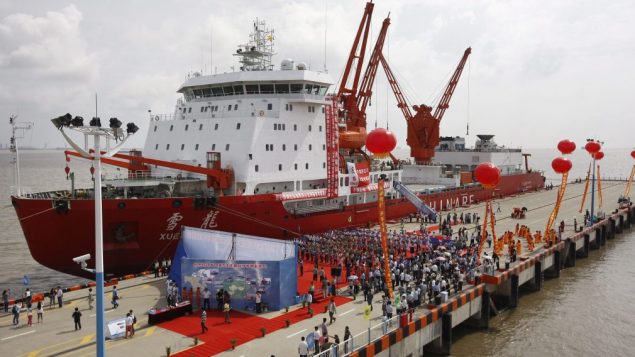
The Chinese icebreaker Xuelong harbored in Shanghai in 2012. The Xuelong is the first Chinese vessel to have crossed the Arctic Ocean. (Pei Xin / Xinhua / The Associated Press)
China is also building a new icebreaker capable of operating in the Arctic, which is expected to enter service in 2019.
In January 2018, Beijing published a white paper on the Arctic, which describes China as a “near-Arctic” state and “an important stakeholder in Arctic affairs.”
The strategy identifies China’s interests as access to natural resources, securing Arctic sea lines of communications (SLOCs), and promoting an image of a “responsible major country” in Arctic affairs, the Pentagon assessment says.
That has prompted concerns from Arctic states over Beijing’s long-term strategic objectives, including possible military deployments.
The Pentagon report noted that Denmark has expressed concern about China’s interest in Greenland, which has included proposals to establish a research station and a satellite ground station, renovate airports and expand mining.
“Civilian research could support a strengthened Chinese military presence in the Arctic Ocean, which could include deploying submarines to the region as a deterrent against nuclear attacks,” the report said.
Designing Arctic-capable submarines
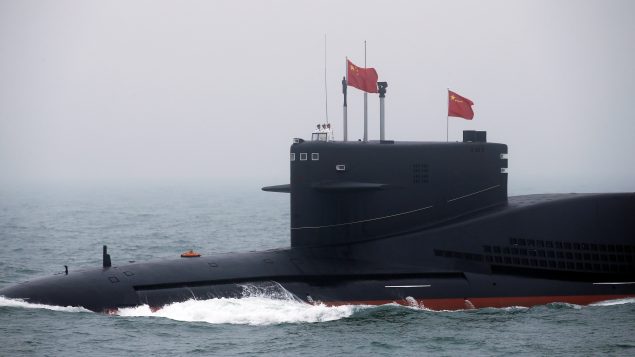
Chinese Navy’s nuclear-powered submarine Long March 11 takes part in a naval parade off the eastern port city of Qingdao, to mark the 70th anniversary of the founding of Chinese People’s Liberation Army Navy, China, Apr. 23, 2019. (Jason Lee/REUTERS)
Rob Huebert, senior research fellow with the Centre for Military and Strategic Studies at the University of Calgary, said given “the inevitable logic” of what the Chinese doing in the Arctic, a discussion of the eventual appearance of their submarines had to take place.
The Pentagon report noted that China’s military has made modernizing its submarine fleet a high priority. China’s navy operates four nuclear-powered ballistic missile submarines, six nuclear-powered attack submarines and 50 conventionally powered attack submarines, the report said.
However, there are no reports in any open source literature that would lead experts to believe that the Chinese military has already gained the technological capability and the know-how to operate submarines in the Arctic, Huebert said.
However, given the closed and secretive nature of the Chinese political system and its military, it would be very easy for them to hide preparations for deploying submarines to the Arctic, Huebert said.
“They can hide the necessary ice strengthening that is required for their submarines to enter ice conditions and so we would not be seeing them doing the necessary work for the emplacement of the upward-looking sonar, the hardening of their sail, the retractable fins: all of this can just simply be hidden from sight as they’re doing it,” Huebert said.
Gaining Arctic operational know-how
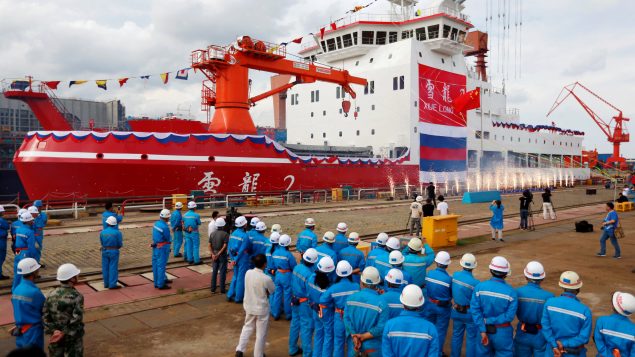
People attend the launch ceremony of China’s first domestically built polar icebreaker Xuelong 2, or Snow Dragon 2, at a shipyard in Shanghai, China Sept. 10, 2018. (REUTERS)
Also, in order for the Chinese navy to operate in the Arctic, they need to have good charts of the poorly charted region, Huebert said.
“What I strongly suspect is that the Chinese have been utilizing both their scientific contacts to be able to get access to various forms of mapping with their scientific cooperation but, more to the point, I think that they have probably have been using the Xuelong as a means of mapping the ocean bottom,” Huebert said.
“If you look at the overall passages where the Xuelong has gone, you can see quite clearly these are regions you would want to be sending submarines.”
In that sense, the Chinese would be doing what the U.S. and the USSR did when they began sending their submarines under the Arctic ice, he said.
Security implications for Canada
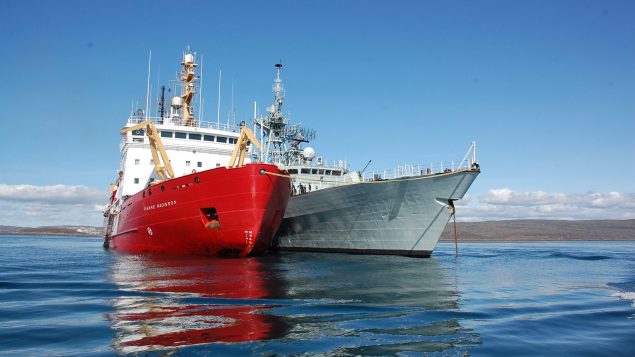
FILE-HMCS Toronto (right) and the Canadian Coast Guard Ship Pierre Raidisson are lashed together in an inlet off Iqaluit, Nunavut during a military exercise in the Arctic last summer in this file photo taken on Aug. 18, 2009. (Murray Brewster/THE CANADIAN PRESS)
Chinese submarine presence in the Arctic would have huge implications for Canada and the defence of North America under the bi-national U.S.-Canada North American Aerospace Defense Command, which since 2005 is also responsible for looking for underwater threats, Huebert said.
“When you’re dealing with the Russians, you sort of know how they operate, you have certain givens that you can appreciate,” Huebert said. “You have the Chinese enter into this environment and all of a sudden you’ve got a much-much more complicated problem.”
NORAD would have to develop the means of not only detecting the Chinese submarines but also distinguishing them from the Russian submarines, he said.
“In an international crisis knowing the difference, of course, will be critical,” Huebert said. “And so for Canada all of a sudden the security enforcement of its maritime approaches just becomes that much more difficult as we move into an era that Chinese submarines do start appearing [in the Arctic].”
The Pentagon report said China had built six Jin-class submarines, with four operational and two under construction at Huludao Shipyard.
In a January report, the Pentagon’s Defense Intelligence Agency said the Chinese navy would need a minimum of five Jin-class submarines to maintain a continuous nuclear deterrence at sea.
The United States and its allies, in turn, are expanding their anti-submarine naval deployments across East Asia. This includes stepped-up patrols of America’s advanced, sub-hunting P-8 Poseidon planes out of Singapore and Japan.
With files from Reuters
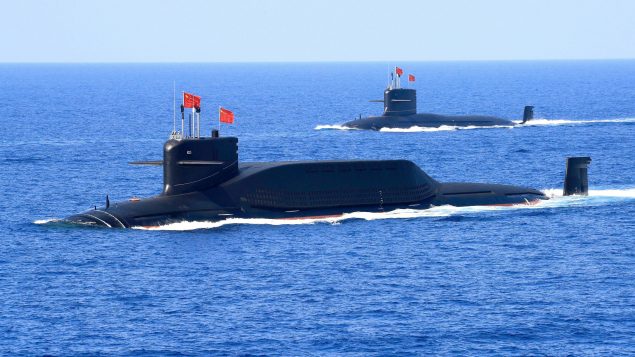






For reasons beyond our control, and for an undetermined period of time, our comment section is now closed. However, our social networks remain open to your contributions.